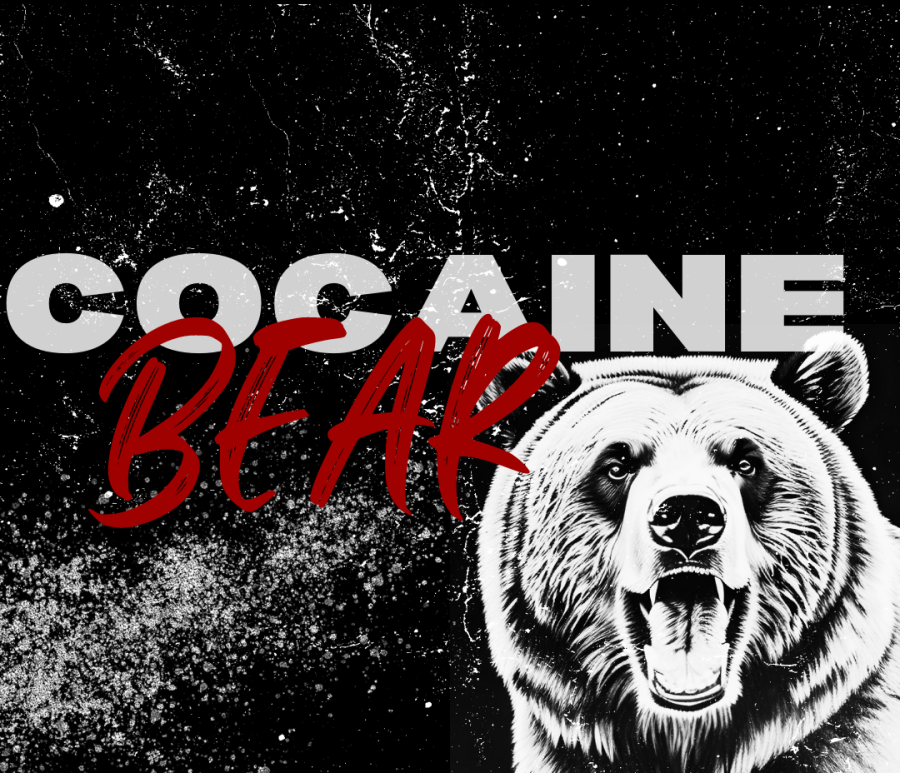Cocaine Bear Review
April 27, 2023
A few weeks ago, I had heard whisperings of a life-changing film, the title was premise so simple, yet artful, I was almost convinced that it was unreal. Yet, while I know bears are just about as real as unicorns and dinosaurs, Cocaine Bear, released this year by director Elizabeth Banks, is about as accurate a portrayal of human emotions as the Mona Lisa. Both works offer a subtle mystery that most cannot put their fingers on. I, however, peeling back the layers of the far superior work, squinting through the screen, was able to decipher the to as complicated as the bear’s inner workings.
And when I figured it out I was blown away.
What does it all mean?
At its core, Cocaine Bear is a Hansel and Gretel retelling.
Dee Dee, eerily similar to Gretel, is upset with her mom’s announcement of a weekend trip together with her new boyfriend after the untimely death of Dee Dee’s father, rather than the day spent just the two of them. Gretel and her brother Hansel are forced out of their home by their father and stepmother because they do not have enough to eat, and after several attempts by the parents to leave the children in the woods for good after they make it home, the children find themselves in the presence of a woman dwelling in a state-of-the-art candy home. Dee Dee, with her friend Henry, skip school and find themselves in the presence of a bear in the possession of a brick of cocaine.
Cocaine Bear is also an intellectual examination of family dynamics and deep generational wounds. The bear has a family in which the father is not present, Dee Dee is mourning the loss of her father, Henry’s family is unstable, and the emotional bond between father and son adds to the fraternal themes of the story.
For those of us born in the digital age, Cocaine Bear presents itself as a nostalgic reminiscence of a life never lived. What would it feel like to be able to truly lose all connection to the outside in the deep woods in the presence of a bear on cocaine? I’m sure most Gen Z people dream of this every night, with our tired eyes threatening to roll out of our sockets as we scroll past yet another large, impossible moment caught on a tiny screen.
The bear devours limb after limb, and keeps going. One begins mildly frightened, watching this scene, surprised that the camera does not cut after the disappearance of a left shoe. After one has observed the entirety of the person entering the bear, it becomes funny again, and the soundtrack never helps (especially in the ambulance scene). This sequence is repeated multiple times throughout the course of the film, and audiences never truly are forced to reckon with the truly unfunniness of the consequences of humans destroying animal habitats. Sure, the bear is a little bloated, but so are we.
Most young audiences want to see something new. We are tired of remakes and sequels, and if everything else has been done before, we will watch the new thing, whatever it is, and we will enjoy it if it means being protected from the gore and despair of the real world. The real Cocaine Bear never went on a drug-induced rampage. It died quickly and quietly, as any member of the animal kingdom sickened by the human race would. But there is no story in that, aside from a gloomy documentary. We want to see a story of family and humor against one of tragedy. At the very end of the film, Dee Dee, her mom, and Henry walk home, relatively unscathed. There is hope here, and like a bear to cocaine, we all want to feel something.


